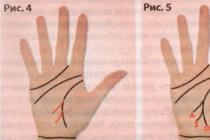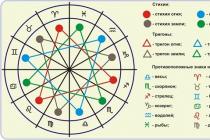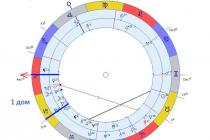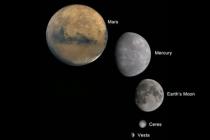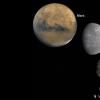The chastity of Vesta is associated with the sign of Virgo, but she also has an affinity with the sign of Scorpio. In the original zodiac of the Assyrian culture, there was no Libra constellation: Virgo was followed by Scorpio, and what later became Libra were the claws of Scorpio. The symbols of Virgo and Scorpio are similar, only the sign of Virgo is directed inward, and Scorpio is directed outward. The Great Mother Goddess symbolized both the virgin's chastity and the Scorpio's marriage at the same time. And only in patriarchal culture, the sign of Libra's marriage created an artificial separation of female roles (virginity before marriage and sexuality after). The discovery of Vesta shows the possibility of combining these two themes in one archetype.
The Vestals of late Rome appear before us as nuns engaged only in work and religious service, whose life is devoid of personal relationships. This image has come down to us as the image of an old maid. However, in horoscopes, this interpretation does not work: we often find a good position of Vesta in sexually active women and men. However, this sexuality is not limited to the framework of the traditional family, but refers us to the ancient rituals of the priestesses of Vesta, who used their sexuality not to find a husband, but to serve the moon goddess and bless those who are devoted to her. Their sexual idealism aims at achieving ecstatic states. Modern society still does not understand the purity of such motivation.
People of the Vesta type are highly sensitive to the sexual needs of a woman, at the same time, their nature encourages them to remain in themselves and avoid long-term attachments. Such people may express open rebellion against traditional mores, followed by feelings of guilt and remorse for their actions. The pathology associated with Vesta is the association of sex with fear (the horror of the Great Mother, described by Freud).
In the Olympic family, Vesta is considered the eldest child of Saturn. Her relationship with Saturn confirms the fact that they rule over the earth signs Virgo and Capricorn. Both of them express the principles of limitation, limit, focus and mission. Sexual restrictions reflected by Vesta are similar to the tense aspects of Saturn to Venus and Mars. The defeat of Vesta Mars can reflect physical or psychological impotence. Aggressiveness can serve as compensation. The defeat of Venus or Juno may indicate a woman's frigidity or that she feels incapable of love. The compensation can be feigned independence. In both cases, the defeat of Vesta indicates an inability to share oneself with others (to give oneself to another). At the same time, the potential partner appears to be a rude, demanding tyrant.
In general, Vesta reflects the principle of sex as a means of spiritual service. However, in the modern psyche, it often presents a wide range of sexual difficulties resulting from the suppression of natural instincts.
In Leo, sexual energy works as the creative principle of reproducing oneself. In Virgo, the energy of reproduction is used spiritually for the transformation and renewal of oneself. Through Vesta, the transition from Leo to Virgo is carried out. The Vesta type can sublimate and transform sexual energy into one-pointed focus and dedication to work. Virginity implies perfection in oneself, self-control and self-sufficiency. Therefore, it is not sterile, but very fruitful. To restore their purity and integrity, the Vestals bathed in sacred springs and withdrawn into themselves, and transits to the Vesta can indicate a time of inner purification and reintegration.
As a principle of focus, Vesta collects energy and directs it to one point. With an afflicted Vesta, the focus can be blurry and vague or, at the other extreme, be too specific and generate a narrow and limited vision of the world. Through self-determination, a person is able to devote himself to a goal. The defeat of Vesta may indicate that a person is afraid to take on obligations or is unable to fulfill them. Vesta can also mean the work of a person in the sense of his path, his fulfillment of his dharma. This focus goes beyond the personal and extends to society and the planet. If a person is unable to do this type of work, it can lead to frustration and dissatisfaction. Thus, Vesta also indicates the sacrifices that a person must make in order to follow the chosen path.
Describes 12 styles of focus, commitment, and what we must give up in order to fulfill our life purpose. She also describes the way sexual energy is dealt with: its freedom, sublimation or suppression.
Vesta in homes indicates an area of commitment or dedication, as well as an area of limitations.
Vesta in the houses
Vesta in the 1st house
Through a strong focus on self-determination or pursuing one's own goals, there may be a tendency to exclude long-term relationships from life. One-pointedness and abstinence can lead to significant gains. Loyalty to yourself.
Vesta in the 2nd house
The ability to generate resources to provide and support yourself and your loved ones. There may be limitations in money, comfort and feelings in such a way that the tension created leads to the study of the art of self-expression.
Vesta in the 3rd house
The purpose of the advanced mind is to spread information among others. Communication restrictions may arise in order to clarify their own ideas. If a person is critical of himself, he may feel a sense of inferiority in his intellect. This situation is characterized by work with the intellect.
Vesta in the 4th house
Devotion to home and family. Often the added responsibility in the home in youth grows into responsibilities towards the family afterwards. Such a person may experience limitations in personal freedom due to these obligations. An efficient and qualified approach to household chores is required.
Vesta in the 5th house
A vocation for personal creative expression - in children or art forms. Alienation from children, romance and pleasure may be present. Due to the excessive sublimation of sexual energy, obstacles may arise in this area. There is a need for a creative profession or something that puts the person in the spotlight.
Vesta in the 6th house
Commitment to work and efficient operation. Health problems can draw attention to self-medication, nutritional care, and exercise. The incentive to improve can lead to very good work.
Vesta in the 7th house
A vocation to work in cooperation. Since Vesta craves self-fulfillment and independence, conflict can arise in cases where a compromise is required. Often the person is overly engrossed in interaction.
Vesta in the 8th house
A vocation for psychic and occult activities or deep interaction with others. It can also be difficult for such people to find someone to match their sexual intensity, and thus, they may feel limited in this area. Difficulties with others about the allocation of resources - money and energy - can lead to learning how to give up personal desires and share property.
Vesta in the 9th house
A vocation to seek the truth. Over-focusing on a belief system can lead to political or religious fanaticism. Limitation of the breadth of horizons. The ideal image must be found in the material world.
Vesta in the 10th house
Devotion to a career or social position. Closeness to the MC can indicate a spiritual calling. It can be difficult to find a satisfying destination and path if critical abilities are developed. Potential talents are monstrous discipline, thoroughness, and the will to work hard.
Vesta in the 11th house
Calling for group interaction. There may be limitations in friends or companies, and from this a person understands the value of others in his life. There is a need to merge hopes and desires together so that a person can devote himself to an ideal.
Vesta in the 12th house
Dedication to selfless service and spiritual values. There is a strong subconscious need for isolation and withdrawal in order to develop deep faith. Persecution for religious beliefs or fear of past mistakes can lead to fear of entering into spiritual nature. There may be subconscious sexual fears and barriers that are overcome by combining the desire for the infinite with a practical assessment of the physical world and its limitations.
Vesta is an asteroid, curious in many ways. This is the only such object that can be seen with the naked eye. In terms of mass and size, Vesta surpasses most other known asteroids in the space between the orbits of Jupiter and Mars. In terms of its parameters, it is even closer to. Located in the Main Vesta, it refers to bodies that were formed at about the same period as the Earth, which means that it can tell a lot about the distant past of our system.
Opening
Vesta is an asteroid discovered while searching for a planet between the orbits of Mars and Jupiter. According to the theory, the distribution of orbits in space around the Sun obeys a certain pattern. All planets known at the beginning of the 19th century fit into this theory. The only exceptions were Jupiter and Mars. The huge space between them was supposed to hide an unknown planet. During her search, many elements of the main asteroid belt were discovered.
Vesta was discovered in 1807 by Heinrich Wilhelm Olbers. Another scientist, Karl Gauss, gave her the name of the ancient Roman goddess of the hearth. The name stuck and is still used today.
Options

After Ceres was classified as a dwarf planet, Vesta ranks second in size among asteroids after Pallas. Its parameters are 578 × 560 × 458 km. The noticeable asymmetry of the shape does not allow Vesta to be attributed to dwarf planets. In terms of mass (2.59 * 10 20 kg), it is ahead of Pallas, that is, in the main asteroid belt, only the same Ceres surpasses it in this parameter.
Does the asteroid Vesta have an atmosphere?
Asteroids do not just stand out as a separate class of cosmic bodies. They differ from planets in a number of parameters: size, shape, mass, and so on. Signs characteristic of the asteroid do not allow it to hold the gas envelope. Therefore, the answer to the question "does the asteroid Vesta have an atmosphere" is negative. An extremely rarefied shell of gas exists on Ceres. Other bodies in the Main Belt cannot boast of such a characteristic as the asteroid Vesta. Has an atmosphere of Earth, Venus, Mars, gas giants and some satellites. Asteroids are too small for that.
How to see the asteroid Vesta?
Due to its brightness, Vesta can be seen with the naked eye. Although it is inferior in size to Ceres and Pallas, it is characterized by a more significant reflectivity. Other asteroids from Earth cannot be seen without special equipment.
The best time to look for an asteroid in the sky are the days of opposition, when it comes closest to Earth. During these periods, its brightness increases to 5.1 m (the minimum value of this parameter is 8.5 m). The last time such a confrontation occurred in April 2014.
Vesta approaches the minimum distance to our planet every 3-4 years. Without a telescope, it can be seen only in good visibility conditions. Moreover, it does not differ from ordinary stars.
Traffic
Vesta's orbit lies in the interior of the Main Asteroid Belt. Its shape is only slightly elongated - it is an almost perfect circle. The orbit is characterized by a slight inclination to the plane of the ecliptic. Vesta makes one revolution around the Sun in 3.6 years. At the same time, during its movement, the asteroid does not cross the orbit of our planet.
Automatic interplanetary station Dawn

In July 2011, Vesta passed the point of minimum distance to our planet. This period was used for a detailed study of the asteroid. Back in 2007, AMC Dawn went to Vesta. The mission of the apparatus is to study this asteroid, as well as the dwarf planet Ceres.
Dawn entered the circular orbit of Vesta on July 16, 2011. By December 12, it reached its minimum height above the asteroid. Among the tasks of the apparatus were the measurement of the gravitational field, the determination of the spectrum of neutrons and gamma rays, which appears when cosmic rays fall on the asteroid Vesta. Photos of the object began to arrive on Earth on December 13th.

AMC Dawn left the 2012 asteroid and traveled to Ceres. To date (December 2015), the device continues its work in the orbit of a dwarf planet.
Sight

Vesta is an asteroid carefully "examined" by the Hubble telescope. The research was carried out in the 90s of the last century. Hubble has studied the surface of the asteroid. The most impressive detail of the relief turned out to be a giant crater, later named Reyasilvia. The trail, presumably left by the collision, is 460 km in diameter and 13 km deep. Scientists still cannot answer the question of how Vesta was able to survive such a blow.
AMC Dawn also studied the state of the crater. According to scientists, Rheasilvia was formed 1 billion years ago. The crater basin partially obscures the trail from another more ancient impact, called the Veneneya crater. In the center of Reyasilvia there is a mountain 22 km high and 180 km in diameter. In terms of its parameters, it is ahead of the giant Olympus on Mars, which was previously considered the highest known mountain in the solar system.
Scientists suggest that the material ejected during the impact served as the material for the emergence of objects of the Vesta family and class V asteroids.
Researchers turn their gaze to such objects, because they can tell a lot about the time when the solar system was just forming. Vesta is an asteroid similar in composition to terrestrial planets. Most likely, its study will tell astronomers a lot about the distant past of our piece of the Galaxy.
We are used to thinking of the solar system as a vast family of planets with their satellites, in the center of which is a huge massive Sun, which by its gravity determines the movement of the planets. The large planets, in order of their distance from the Sun, are arranged in the following sequence: Mercury, Venus, Earth, Mars, Jupiter, Saturn, Neptune, Uranus and Pluto. But not everyone knows that, in addition to the nine "large" planets, there are tens of thousands of small planets invisible to the naked eye, which move around the Sun, mainly between the orbits of Mars and Jupiter.
Distances of planets from the Sun
The distances of the planets from the Sun are very large, and it is inconvenient to measure these distances by ordinary terrestrial measures: numbers would be too large (it's just as if we began to measure the distances between cities in millimeters). Therefore, to measure distances in the solar system, a special astronomical unit is adopted - the distance from the Earth to the Sun, equal to 149.5 million kilometers. The distances of the planets from the Sun form an evenly increasing sequence; only between Mars and Jupiter the gap is disproportionately large. This was noticed back in the 16th century by the famous German astronomer Kepler, who suggested that there must be an unknown planet filling this gap.
Unknown planet
At the end of the 18th century, a project was even put forward for a systematic search for such a planet. But the unexpected discovery outpaced its implementation. On the night of January 1, 1801, the Italian astronomer Piazzi, who was observing the stars at the observatory in Palermo (the island of Sicily), noticed an asterisk that no one had seen in this place before. The next day, this star shifted slightly relative to neighboring stars. Piazzi followed her movements closely for six weeks, until a sudden illness forced him to stop observing. After his recovery, he could no longer find a wandering stranger, who had gone far from her previous position and was lost among the bright stars. Piazzi informed his friends-astronomers in Germany about his discovery. They suggested that a planet was discovered filling the gap between Mars and Jupiter. But how to find the fugitive again, how to indicate the place where to look for her?
Gaussian calculations
The young German mathematician Gauss became interested in this issue. He managed to solve the problem of how, knowing the three precisely measured positions of the planet, determine its orbit. The results of Gauss's calculations showed that the object discovered by Piazzi is indeed a planet moving in an elliptical orbit just between Mars and Jupiter, at a distance of 2.8 astronomical units from the Sun. Gauss predicted where this planet should be located a year after it was sighted. In December 1801, she was found again exactly where she was supposed to be. This finding, made on the basis of preliminary theoretical calculations, serves as a shining example of scientific foresight.
Ceres, Pallas, Juno, Vesta - fragments of a large planet
Piazzi named the new planet Ceres in honor of the Roman goddess of fertility, who was once considered the patroness of Sicily. In March 1802, the German astronomy lover Olbers, observing Ceres, to everyone's surprise discovered two instead of one planet and thus discovered another minor planet, called Pallas. This led Olbers to think that both planets are fragments of some large planet, which was torn apart under the influence of unknown reasons. And if so, then there must be other fragments. And astronomers set about searching, which turned out to be successful: in 1804, the third planet, Juno, was discovered, and in 1807, the fourth, Vesta.
Discovery of the fifth and sixth planets
After that, for 38 years, not a single planet was discovered. However, the search did not stop. How great was the hope of finding a new planet, can be judged by the fact that the amateur astronomy German postal official Genke devoted 15 years of his life to the search. And his diligence was rewarded: in 1845 he discovered the fifth, and two years later - the sixth planet, and thus began a series of discoveries that have already been incessant to this day. The newly discovered planets turned out to be downright tiny compared to the previously known large members of the solar system.
Dimensions of Ceres, Pallas, Juno and Vesta
With the help of very strong telescopes, it was possible to determine the dimensions of the first four of them: it turned out that the diameter of Ceres is 768 kilometers, Pallas is 489 kilometers, Juno is 193 kilometers, and Vesta is 385 kilometers. These largest of the minor planets are many times smaller than even our Moon. The smallest ones available to observation in modern telescopes of the planet are less than 1 kilometer in diameter. Only Vesta is sometimes visible to the naked eye; the four largest of the minor planets at the time of their opposition can be seen through binoculars.
Asteroids - minor planets
In the telescope, the minor planets looked like stars, in the form of dots, so they were called minor planets, or asteroids, which means "star-like" (from the Greek word for "astron" - a star). In fact, asteroids have nothing to do with stars. Stars are giant self-luminous bodies, like our Sun, located thousands or even millions of astronomical units from the solar system. Because of this remoteness, they seem to us to be weakly luminous fixed points. Small planets are very small bodies - members of the solar system, shining with reflected sunlight, moving from the Earth at a distance of several astronomical units (and sometimes even fractions of an astronomical unit) and moving across the sky against the background of fixed stars.
Sky map
The first four of the found minor planets - Ceres, Pallas, Juno and Vesta - turned out to be the brightest: they shine like stars from 6th to 9th magnitude, all the rest are much weaker. To find the faint planet, the observers mapped a small area of the sky and used it to carefully survey it in search of an extraneous moving object. It was hard and painstaking work. Gradually fainter asteroids opened up. Finding them required large telescopes and highly detailed stellar maps. The search for asteroids has become inaccessible to amateurs.
Astrograph
In 1891, photography was first used to observe minor planets, which greatly simplified the search and study of asteroids. Pictures of areas of the sky are made by special telescopes - astrographs, in which the eyepiece is replaced by a cassette with a photographic plate. The astrograph is installed so that its tube, moving with the help of the clockwork, can follow the apparent rotation of the firmament. If we direct the astrograph at some part of the starry sky and start the clockwork, then the stars will not leave the field of view of the device (which would have happened with a stationary tube), their light will always fall on the same places on the plate, so, that the stars will turn out in the form of small circles or dots. If in the area of the sky being filmed there is a small planet moving relative to the stars, then with a long exposure a trace in the form of a dash will appear on the plate, which will betray its presence. Sometimes another method of capturing asteroids is used, proposed by the Soviet astronomer S. N. Blazhko. A picture is taken with a relatively short exposure (several minutes), then the plate is shifted slightly and a second (and sometimes a third) photograph is taken on the same plate. It turns out two (or three) images of each star in the form of a chain, and all the chains are parallel to each other. Since the small planet will have time to move during the photographing, the corresponding chain will not be parallel to the others, and the asteroid can be easily detected. But it is not enough to find a trace of a minor planet on a photographic plate. To be able to determine the orbit of an asteroid and predict its position in the future, you need to know exactly at least three of its positions at different times. Therefore, only a few asteroids, whose orbits are well defined, are cataloged and given a permanent number and name. By the beginning of 1955, the catalog of minor planets contained 1 605 numbers. Numerous observatories conduct observations of minor planets. In the USSR, the astronomers of the Simeiz observatory in the Crimea made a great contribution to the observation of known asteroids and the discovery of new ones: GN Neuymin, SI Belyavsky, VA Albitsky, and PF Shain. In total, more than 800 planets have been discovered in Simeiz, of which 116 are included in the catalog. The Minor Planet cannot be observed all year round; it is visible only around the time of the so-called oppositions, when the planet is in the direction directly opposite to the Sun, as viewed from the Earth. At this time, the planet is closest to Earth, and its side visible to us is best illuminated. Having “caught” the planet around the time of its confrontation, we must wait a year or even more to see it again. But for this you need to determine in advance the place where you should look for the planet. Therefore, for all numbered asteroids for the time of their visibility (usually for two months around the moment of opposition), the so-called ephemeris are calculated annually (from the Greek word ephemeris - good for a day), that is, coordinates at regular intervals. They are used to observe minor planets at all observatories in the world. Unlike large planets, some asteroids move along highly elongated ellipses, which is why their distances from the Sun and the Earth can vary within very significant limits. Almost all minor planets move in a ring bounded by the orbits of Mars and Jupiter. Most of the asteroids are located in a narrow belt at a distance of 2 to 3.5 astronomical units from the Sun. But there are asteroids that go far beyond the orbits of Mars and Jupiter. Some of them can go inside the orbit of Mars (Eros), Earth (Cupid) and Venus (Apollo, Adonis, Hermes), and discovered in 1949 Icarus even goes beyond the orbit of Mercury and passes at a distance of only 0.2 astronomical units from the Sun. In some years, these minor planets can come very close to the Earth. All these asteroids are very small, and their brightness is extremely weak; they could only be discovered because they passed close to our planet. The sizes of their orbits and the periods of revolution are small. Eros makes a complete revolution around the Sun in 21 months, and Icarus in just 13 months. Observations of small planets close to the Earth are of great importance, since they make it possible to accurately determine the distance from the Earth to the Sun, that is, to measure the length of an astronomical unit in kilometers. In this respect, the observations of Eros are especially important. Eros is the brightest planet in this group; it looks like a 10-11th magnitude asterisk, and therefore can be observed longer and better than others. In some years, Eros approaches the Earth at a distance of 23 million kilometers. The orbits of some asteroids. The orbits of Icarus and Hidalgo are strongly elongated. Achilles belongs to the group of Trojans and moves along almost the same path as Jupiter. Pallas's orbit is typical for most asteroids. Due to its proximity to us, its apparent positions among the stars differ markedly from each other when observed from two distant observatories. By measuring this displacement and knowing the distance between the observatories, we can calculate the distance to Eros in kilometers. On the other hand, applying Newton's law, we can calculate the distance to Eros in astronomical units. From the comparison of the obtained numbers, we find the length of the astronomical unit. There are asteroids that can be very far away from the Sun. The largest and most elongated orbit belongs to Hidalgo. It approaches the Sun at a distance of two astronomical units and moves away from it at a distance of 9.6 astronomical units, that is, at the distance of Saturn. There is a group of planets moving at almost the same distance from the Sun as Jupiter, and some of them are always about 60 degrees of arc ahead of Jupiter, and some are at the same distance behind, so that the Sun, asteroid and Jupiter form approximately equilateral triangle. This group of planets is called the Trojan, since all its members are named after the heroes of the Trojan War. Large planets (except Pluto) move in almost the same plane as the Earth - the plane of the ecliptic. The orbits of many minor planets are inclined to this plane at significant angles, only a few of them move in the plane of the ecliptic. What do we know about the physical nature of asteroids? Asteroids are such small bodies that it is impossible to study their surfaces directly even with the strongest telescopes. Therefore, the only thing that can help us get some idea of the physical nature of asteroids is their brilliance. Asteroids, like all planets, shine with reflected sunlight. The luster of an asteroid depends on its size, its distance from the Sun and the Earth, on the angle at which it reflects sunlight, and on the reflectivity of its surface (the so-called albedo). A small body close to the Earth seems as bright as a large body, but located at a distant distance from us. Therefore, in order to be able to compare the sizes of asteroids, it is necessary to know their brightness at a certain distance. Having estimated the magnitude of the asteroid's brightness and knowing its distance from the Earth and from the Sun at the time of observation, we can calculate what its brightness will be at a distance of one astronomical unit both from the Sun and the Earth, the so-called absolute brightness. The absolute brightness depends only on the size of the asteroids and their albedo. Knowing the diameters of the first four asteroids and their absolute brightness, we can calculate their albedo, that is, we can calculate what percentage of the incident light they reflect. As it turned out, Ceres reflects only 10 percent of the incident rays, Pallas - 13 percent, Juno - 22 percent, and the brightest of all the minor planets, Vesta, 48 percent. When compared with other bodies in the solar system, then Ceres reflects light approximately, like the Moon, Pallas - like Mars, Juno is slightly lighter than Mapca, and Vesta is as bright as Venus. This is how we got the first, very scanty information about the properties of the surface of the first four asteroids. We can indirectly obtain some information about other asteroids. First of all, it is interesting to estimate at least their size. To do this, you need to know their albedo. Suppose, for example, that, on average, minor planets reflect light like Mars. Then, knowing the absolute brightness of the planets, we can approximately calculate their diameters. There are very few large asteroids: under our assumption, it turns out that only 33 of them have a diameter of more than 200 kilometers, almost half - less than 40 kilometers. There are very tiny asteroids - asteroids close to the Sun are only 1-2 kilometers in diameter. It is clear that they can only be visible when they pass close to the Earth. Distant asteroids (for example, the Trojans) are relatively large, with a diameter of more than 40 kilometers (otherwise they could not have been discovered). We can assume that all large asteroids are already known to us. It has long been noticed that the brightness of some asteroids can change. This was first discovered in 1900 when observing Eros: in 79 minutes, its brightness fell by 11/2 magnitudes, and then began to increase again. The full period of change in the brightness of this minor planet, as it turned out, lasts 5 hours 16 minutes. Many asteroids with variable brightness are now known, and none of the planets change their brightness as significantly as that of Eros: usually this change is only a few tenths of a stellar magnitude. Such fluctuations in brightness can only be caused by the fact that asteroids are rapidly rotating bodies of very irregular shape. Apparently, these are huge rotating debris that appeared during some kind of cosmic catastrophe. The number of asteroids orbiting the Sun in interplanetary space is enormous. In addition to the 1 605 minor planets listed in the catalog, about 7 thousand asteroids were discovered, for which it has not yet been possible to determine the orbits due to lack of observations. There are many more asteroids never seen before. According to the calculations of Academician V.G. Fesenkov, the number of asteroids up to 19 apparent magnitude is about 40 thousand, and even smaller flying stones are immeasurably larger. The question arises: is it possible for one of these countless debris to collide with the Earth and would it not cause a catastrophe? In this respect, we can be completely calm: the possibility of a collision with a large asteroid is completely excluded. All large asteroids are already known, and they move in orbits that go far from the Earth. Collisions with small asteroids are possible, but our planet is not threatened with any dangers. In the worst case, it can only cause local destruction of much smaller dimensions than, for example, a volcanic eruption or an earthquake. Meteorites are the only cosmic bodies that come to Earth from interplanetary space. The study of the physical properties of meteorites - the appearance of their surfaces, their color, their albedo - confirms the existence of a connection between asteroids and meteorites. There is only one formal difference between them: asteroids are larger bodies that are observed from Earth as celestial bodies, meteorites are small bodies accessible to study only after their penetration into the Earth's atmosphere and after falling to Earth. How could these interplanetary wanderers, asteroids and meteorites arise? They probably occurred as a result of the disintegration of some body, perhaps a planet, moving between Mars and Jupiter. Under the influence of some, so far unknown, reasons this body disintegrated into parts, which collided with each other, fragmented; this fragmentation, once started, continues further, filling the interplanetary space with debris and dust.
Asteroid (4) Vesta- the second-mass body in the asteroid belt between the orbits of Mars and Jupiter.
In general, it would be more correct to call it "the minor planet Vesta". It is the largest of the minor planets in this asteroid belt.
Image by NASA / JPL-Caltech / UCLA / MPS / DLR / IDA, from the AMC Dawn station, July 24, 2011. The picture was taken from a distance of approximately 5200 km.
It is clearly seen that Vesta did not have enough of its own gravity to take the shape of a ball.
Curious by comparison: the moon of Saturn Mimas is smaller, but it was able to acquire a spherical shape.
 became the most massive asteroid in the asteroid belt between Jupiter and Mars, after Ceres was transferred to the category of dwarf planets. But, in size, the planet Vesta is inferior to Pallas, another minor planet.
became the most massive asteroid in the asteroid belt between Jupiter and Mars, after Ceres was transferred to the category of dwarf planets. But, in size, the planet Vesta is inferior to Pallas, another minor planet.

A fairly bright asteroid, the only one that can be seen with the naked eye. Several other asteroids are also theoretically visible without a telescope, but already at the limit of our eyes, this requires good vision and a truly black sky, without flares.
With the help of the Hubble telescope, an idea was obtained about the surface of Vesta and about its composition.
In 2011, the device "Dawn" ("Dawn") approached Vesta and took more accurate pictures.
The entire South Pole and adjacent areas are occupied by the huge Rheasilvia crater, with a diameter of about 460 km. It is named so in honor of the vestal Rhea Silvia, mother of the founders of Rome, Romulus and Remus. The name is written in exactly one word, so it was decided not to use double names.
 A snapshot of Vesta's southern hemisphere from the Rassvet spacecraft.
A snapshot of Vesta's southern hemisphere from the Rassvet spacecraft.
The picture was taken on July 17, 2011 from a distance of 15,000 km.
In the center, the central hill of the Rheasilvia crater is visible.
But the walls of the crater are not visible, because the Rheyasylvia crater is so large that it is almost equal to the diameter of Vesta itself.
The bottom of the crater is located at 13 km. below the average level of the surface of Vesta, and the edges are 4-12 km higher.
The central hill of the crater - 18 km. height.
It is believed that many asteroids of the same class V are debris from Vesta.
 Elevation map of the southern hemisphere of the asteroid Vesta. The highest places are shown in red.
Elevation map of the southern hemisphere of the asteroid Vesta. The highest places are shown in red.
The large red circle is the walls of the Rheyasylvia crater.
The red spot in the middle of the circle is the central hill of this crater.
The picture was taken from the same point as the top image, but shifted slightly clockwise.
If you look closely, you will notice that the shape of Reyasilvia is not a circle - in the picture it is torn at the bottom, and then another semicircle lies. This is an even more ancient crater - Veneneia, with a diameter of about 400 km.
Veneneia was formed 2-3 billion years ago from the collision of Vesta with a dark carbon-rich asteroid.
And, one billion years ago, Vesta collided with another asteroid of a lighter substance, as a result of which the Reyasylvia crater was formed.
 The blows were truly monstrous and it is not clear how poor Vesta generally remained intact.
The blows were truly monstrous and it is not clear how poor Vesta generally remained intact.
If you paid attention to the dimensions of Vesta in three coordinates, then you probably noticed that two sizes are 500 km each, and in the third - about 400. From this it could be concluded that Vesta is strongly flattened.
Look at the animation of its rotation, which was composed of successive shots: Vesta is indeed flattened from the poles. These are the consequences of the collision with asteroids that formed the craters of Rheasilvia and Veneneia.
Also, take a closer look: as you rotate, along the equator, you can see longitudinal grooves. It is believed that these are grabens - geological folds, more precisely rock faults that were formed from a collision with these asteroids.
However, Vesta got it more than once, as evidenced by other craters, tens of kilometers in size.
 This chain of three craters on Vesta was named "Snowman". Located in the Northern Hemisphere.
This chain of three craters on Vesta was named "Snowman". Located in the Northern Hemisphere.
Their names are from West to East, that is, from left to right in the photo: Marcia, Calpurnia and Minucia (Marcia, Calpurnia and Minucia).
Marsia, with a diameter of about 50-60 km, is the youngest of these craters, as it overlaps Calpurnia.
Minutia is the most stash, which can be seen from the smoothed walls and the integrity of the walls of Calpurnia from his side.
The core of asteroid Vesta is iron-nickel. The mantle is stone. After the initial heating and melting of rocks from nuclear reactions, a period of cooling and crystallization began, which led to a variety of rocks on the West. This can be seen from the spectral analysis of class V meteorites that reach Earth.
Until now, Vesta has only been studied through telescopes. But, in August 2011, the American spacecraft Dawn (NASA), launched in 2007, has already entered Vesta's orbit and transmitted its first high-quality images. In April 2012, he left Vesta and headed for Ceres.
On March 6, 2015, the device entered the orbit of Ceres.
More on this topic:
Dwarf planet Ceres .
Minor planet 433- the planet Eros.



